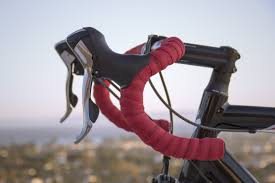Safety Tips: Brakes
 This article is hardly exhaustive. There are many kinds of brakes for bicycles, including rim brakes, disc brakes, drum brakes, coaster brakes, and band brakes. This article focuses mostly on rim brakes with a few comments about disc brakes. For a really good treatment of the many kinds of brakes, their relative advantages and disadvantages, as well as subcategories such as hydraulics, you really should see the late, great Sheldon Brown’s articles: https://www.sheldonbrown.com/brakes.html.
This article is hardly exhaustive. There are many kinds of brakes for bicycles, including rim brakes, disc brakes, drum brakes, coaster brakes, and band brakes. This article focuses mostly on rim brakes with a few comments about disc brakes. For a really good treatment of the many kinds of brakes, their relative advantages and disadvantages, as well as subcategories such as hydraulics, you really should see the late, great Sheldon Brown’s articles: https://www.sheldonbrown.com/brakes.html.
In this writer’s view, brakes are the most important part of a bicycle. The bike must be able to stop. After that, it must be able to turn. Then, if the bike also goes when you turn the crank, well, that’s a bonus. (Same for cars, actually.)
The first thing to notice about brake problems is the difficulty sometimes is not with the brakes. For rim brakes, a wheel out of true will adversely affect braking. A wheel not firmly in the dropouts will cause erratic braking.
For routine maintenance, be sure that the braking surfaces are clean. Any oil or grease, of course, will reduce braking effectiveness. Clean the rim (or disc) with a clean rag and rubbing alcohol to remove residual grease. Use a fine grit emery cloth to lightly sand off road grit and dirt from the pads and rims.
Be sure to check the condition of both the brake pads and the braking surface. A rim that is noticeably convex to the touch spells trouble. Replace it. Grit embedded in the pads of rim brakes can be removed with emery cloth or a very fine file. After sanding, clean with alcohol. Also clean the rims after changing a tire. Grease and/or talc likely found its way onto the rim surface.
Many new riders (and some experienced ones) are apprehensive about aggressive use of the front brake. THE FRONT BRAKE IS YOUR BEST FRIEND! Again, I turn to Sheldon Brown and his thorough discussion of front vs. rear brakes: https://www.sheldonbrown.com/brakturn.html#frontorrear. Brown points out that when a bike slows, especially in a hard stop, much of the weight goes to the front wheel. Where, you may ask, does that weight come from? It comes off the back wheel. As the rear wheel lifts, it loses traction and begins to skid, possibly causing both a loss of control and certainly increasing stopping distance.
On the other hand, in loose gravel or roads covered in dust, give some serious thought to starting with the rear brake.
As with all other maneuvers, when stopping or slowing, give appropriate signals, and call out.
Until next time, “Keep the shiny side up and the rubber side down.” (Also good advice for cars.)
Dave McQuery, Member at Large
